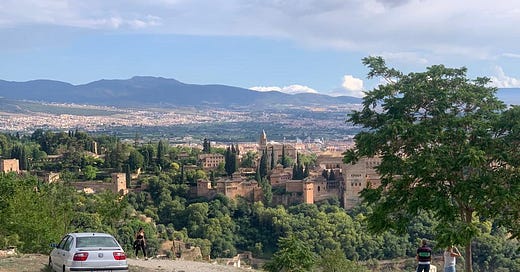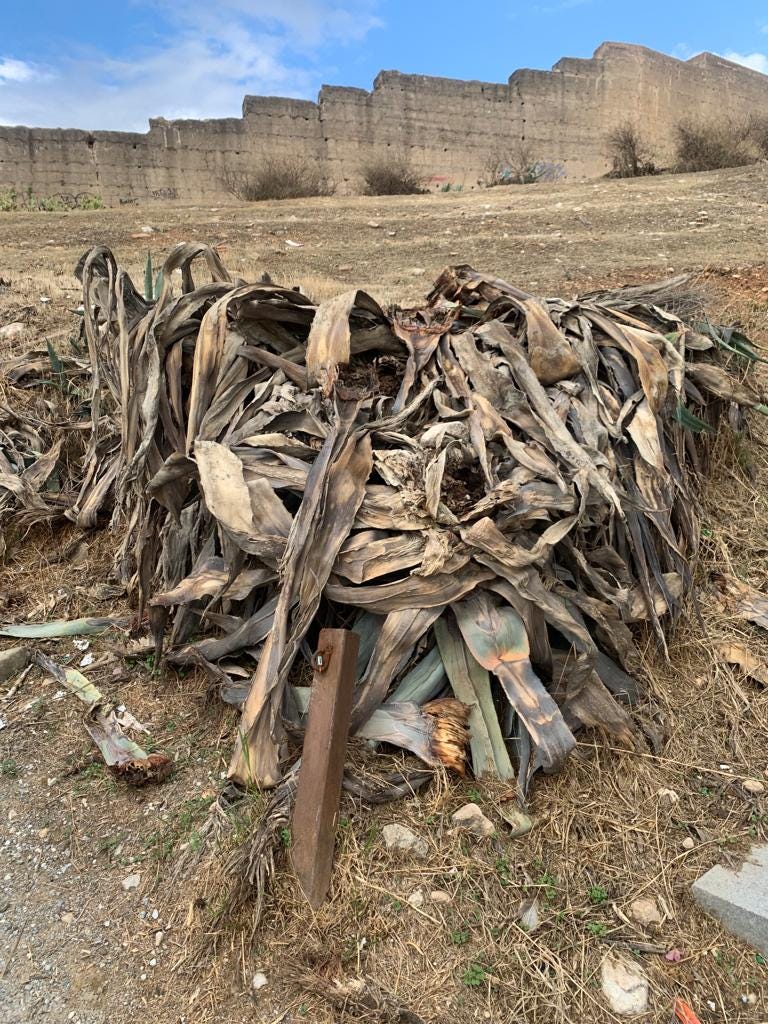Granada sits in the south of Spain, at the edge of the Sierra Nevada mountain range. Inside Granada sits the Alhambra, the most popular tourist destination in Spain. For a country that gets over 10% of its GDP from tourism, this is saying quite a lot. The consequence of all this is pretty blindingly obvious: the city of Granada is quite touristy. It’s not as intense as Florence, granted, which is always a busy hive of sunhats, sunburn and cameras. Still, it is palpable that Granada’s thumping Emirate castle, the last ‘villain’ of the Christian reconquest, has become its raison d’être.
The Alhambra is the economic heart of the city which pumps money around its narrow streets. But this centre is, oddly, off-centre. The Alhambra sits to the east of the actual urban city centre because it hugs a natural promontory immediately adjacent to the Sierra Nevada. Mountain-ranges tend to be inimical to city-building, so Granada stops in its tracks. A weird result of this is that much of the city which also sits on steep hills surrounding the Alhambra, aims itself towards the castle. Granada’s centre is dotted with miradors, viewpoints where one can either join groups of German coach tourists or university students in ‘I’m a Literature Student’ outfits smoking cannabis. It depends on the mirador you pick, by the way. The latter is obviously better.
Such a dominant historical jewel like the Alhambra is obviously a curse as well as a blessing. It introduces thousands of wealthy people who want to spend their money and generate memories. It also unbalances a place, making it a museum, something done, retrospective. You could write an epilogue about Granada.
It’s not just the retrospectiveness which is dissonant—even for a tourist. Parody is generated by the many businesses attempting to cash in on that one big attraction. Thus, in Granada, particularly on Calle Elvira and surrounding streets, there are countless Arabic sweet shops, restaurants called Jerusalem and ‘bazars’ selling all that’s landfill-bound. They are clad with imitations of the arches, tiles and delicate plasterwork of the Alhambra. In plastic. All the menus are the same, and all offer chips. Hmm. And Belgian-style waffles. Double hmm.
The centre of Granada, not including the Alhambra, is relatively small. There are variations on the above, some is less on-the-nose. In general, though, the city feels burdened by the characteristic traits of touristiness: a sense of transience and an absence of authenticity. To find what’s authentic in Granada you have to ascend to the hillier parts of the city with quiet residential streets. Some of these streets contain the famous cave dwellings bored into the rocks, and many of these are indeed turned into flamenco bars for visitors. Some, though, are just houses. Right next to the Mirador de San Miguel Alto there is a patch of semi-desert which holds a number of dwellings amongst cacti. This is a kind of low-density favela, authentic and authentically poor. Walking through it feels voyeuristic. It’s also a little frightening if you’re not confident with dogs, of which there are many uncastrated, angry, toothsome examples wandering around in the heat.
I don’t have many thoughts of interest on the Alhambra itself. It’s a much written-about, excessively photographed site. It’s absolutely worth visiting, just as Florence is. Without it, I don’t think Granada would be particularly worth visiting—and thousands of tourists that go there probably agree with this sentiment. However, the distortions that the Alhambra casts onto the city are of some interest. Perhaps the most curious thing about the city is its geometry. The centre is like a ball fired against a hard object (the Alhambra promontory plus the Sierra Nevada), and squished against it into an oblong. Were I to return, I’d want to explore the outer edge of that oblong: the stretched, gridded plan of the Camino de Ronda, an entirely modern district. The high-density, mixed use urbanism fills that area of the city—and the country—with independent and cheap places to eat and drink. Ordinary Spain is often more captivating than extraordinary Spain.









I have only been on daytrips to Granada but really want to spend the night and see the musicians in the caves. I loved Cordoba, perhaps because we spent a couple of days there and could see it come alive at night. Same with Malaga.